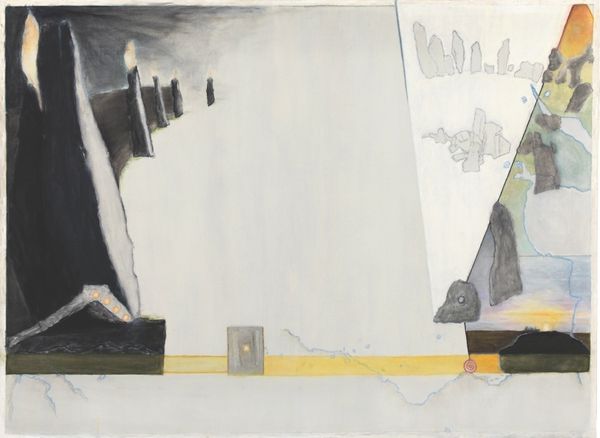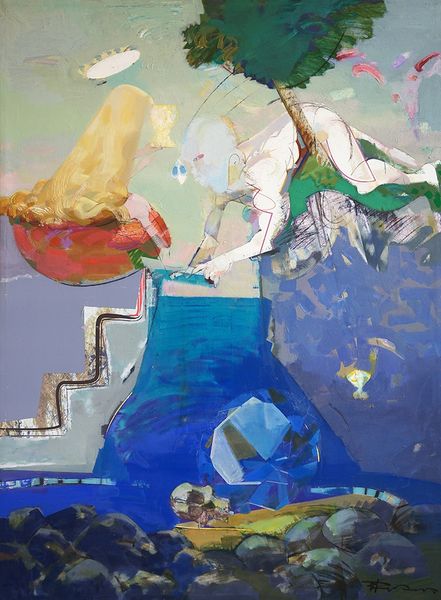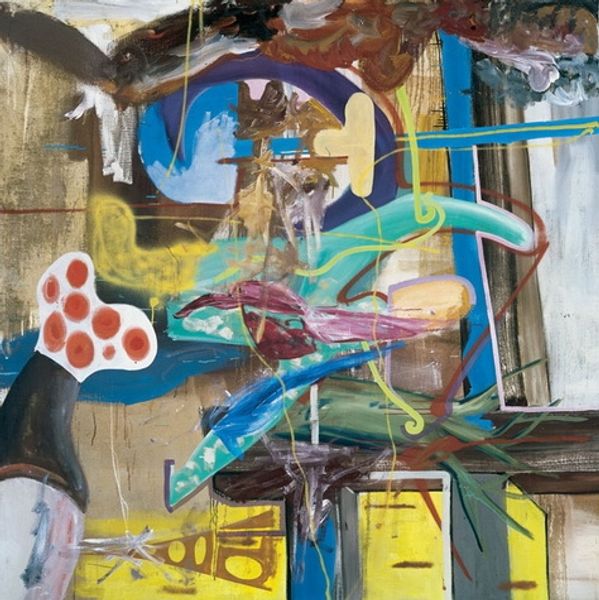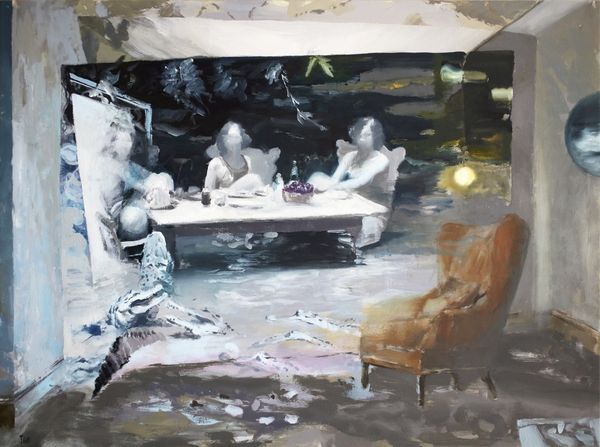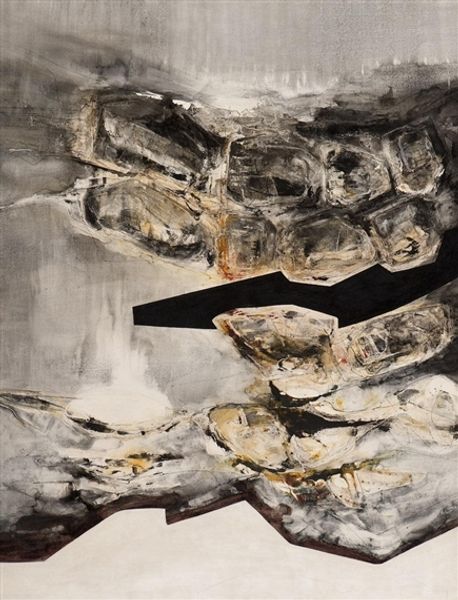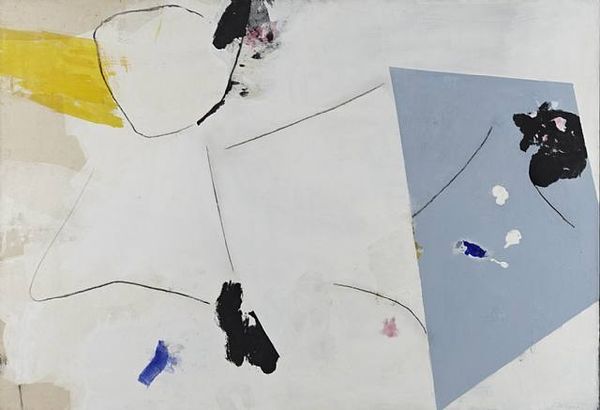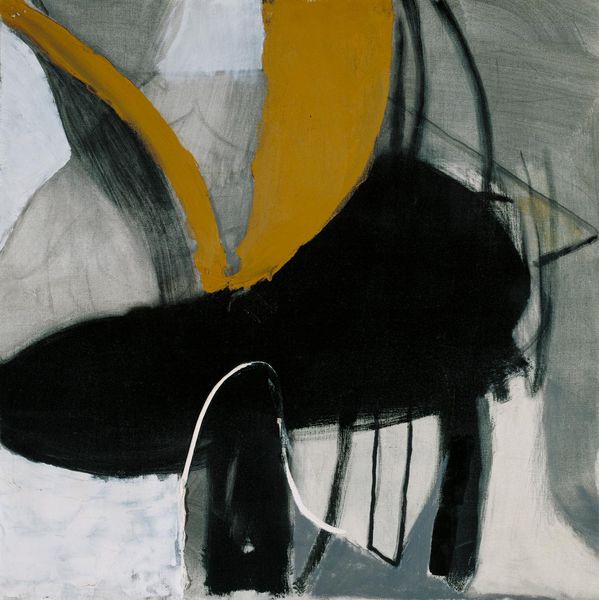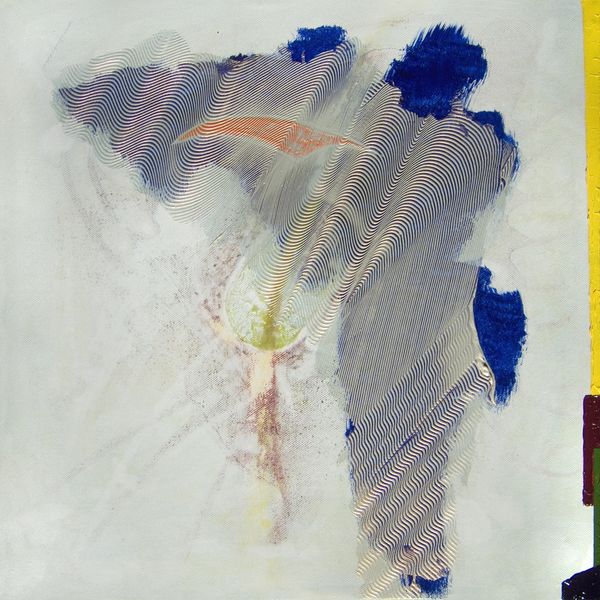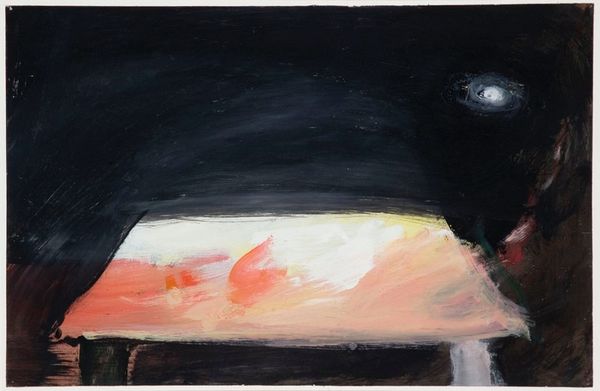
Copyright: Francis Bacon,Fair Use
Art Historian: We're looking at Francis Bacon’s “Jet of Water,” created in 1979. Bacon, though British, is often linked to Neo-Expressionism, an international art movement arising in the late 1970s known for its intense subjectivity and raw emotionality. Curator: My immediate impression? Raw is right. The composition is…turbulent. Those pale blocks, that swoosh of indeterminate medium – water perhaps, given the title– contrasted with sharp, dark lines…It evokes a sense of instability, doesn’t it? Like a scene on the verge of collapse. Art Historian: Instability could certainly be read in the social context of the late seventies; the anxieties around urbanization and technological progress were prevalent. Water, especially a jet of water, in a modern city could stand as a symbol of this unease: a natural resource tamed and exploited. Bacon often depicted the distorted human figure within confined spaces, a motif of alienation. Perhaps, in this, the space has itself become the alienated subject. Curator: Interesting take. For me, it’s the brushwork that is most compelling. See how he handles the oil paint – thin washes contrasted with impasto textures in that implied "jet of water" giving it dynamism and almost tactility. The abstract forms suggest volume, light and shadow; creating depth and tension in an otherwise flat space. Look at the starkness of palette. Do you see visual references, intentionally or not, with architectural modernism's reductive geometries? Art Historian: Perhaps, though Bacon never publicly admitted those types of intentions or deeper meanings to the composition. Although associated with Neo-Expressionism he stands out with his distinctive interest to surrealism and violence and the reflection on the cruelty inherent to contemporary culture. One should think of “Jet of Water” as part of Bacon’s oeuvre, especially with his earlier paintings featuring butchered meat… The imagery resonates, albeit indirectly. Curator: That resonates – the abattoir translated into a different visual lexicon. Despite its apparent chaos, there’s a formal rigor. The geometry contains the free-flowing paint, suggesting control even amidst apparent turbulence. I had missed a political metaphor – good to consider what forces are in control. Art Historian: Absolutely. Appreciating art means embracing multiple interpretations, acknowledging context, while examining formal elements. It allows for a richer experience. Curator: Indeed. Whether a premonition, architectural dissection, or violent, distorted surrealism the piece forces a response, a reaction which, arguably, is a function of its dynamic abstract qualities.
Comments
No comments
Be the first to comment and join the conversation on the ultimate creative platform.
